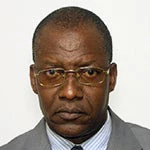
Though Senegal’s situation is unique, insights and lessons from the project can inform and strengthen other rural water PPPs as well.
What changed, and why it matters
In Senegal’s earlier period of reform, government officials looked to community-based management for 1,500 rural water piped systems to serve the 7.5 million people in need of water services across 14 rural regions. (Senegal is divided into three large geographic zones – North, South and Central – with ongoing transactions in smaller areas like Gorom Lampsar and Notto-Diosmone-Palmarin, known as GL-NDP, and the Senegal River region.) At that time, officials thought this would be the best way to eventually scale up management of the rural water system. By 2010, though, discussions between the World Bank Group and the Government of Senegal pushed reform forward by including more private sector management, which also aimed to increase sustainability of the system.
Around the same time, two pilot projects funded by Saudi Arabia caught the attention of the Senegal-based PPP team (which I’m part of), and our government colleagues. The Islamic Development Bank helped with an effort to implement two large rural water supply projects in areas facing poor quality of water resources, and it was the first large transaction in rural water that involved the private sector. It gave us a sense of our path forward, and with advisory services provided by the Water and Sanitation Program (WSP) of the World Bank Group, we began designing a new PPP paradigm for Senegal’s rural water sector.
Moving forward
To conceptualize this new model, we actually looked back, re-examining a 1996 urban water PPP project installed across several Senegalese regions. That project was backed by an asset holding company, and the approach served as another example for us. We then launched a study to develop and confirm our findings, and when the study was completed in 2014, we started constructing the PPP transaction, which would reside under the umbrella of an asset management company.
Many elements of this PPP process – especially those related to procurement and design – will be subject to greater discussion in the future, as we continue to monitor and evaluate the project and design new approaches tailored to other regions. Specifically, the following key risks, challenges and mitigation strategies have been identified. Though these characteristics are unique to these particular regions of Senegal, it’s worth explaining in detail because the lessons learned can be adapted to other rural water PPPs.
We see a need to streamline and improve the procurement process. The procurement process for GL-NDP (a cluster of two large multi-villages rural water supply systems of public standpipe and private household connections in two separate areas) was officially launched by the Government of Senegal in November 2012. It took more than a year to move from launch through the pre-qualification and technical phases to the Financial RFP in January 2014. Clearly this lengthy process increases transaction costs for all and can serve as a barrier to interested parties.
Public procurement in Senegal is managed by the Direction Centrale des Marchés Publics (DCMP), located in the Ministry of Economy and Finance (MEF), and follows a standard procurement code that determines the process and timeline. In the case of GL-NDP, delays were due largely to the procurement entity’s lack of experience with this type of transaction. Much time was spent reviewing and adjusting criteria to meet the sector’s needs and reflect the realities of the private operator market. Some of the initial GL-NDP eligibility requirements were found to be overly stringent (like unrealistic financial requirements) and some bidders were taken out of the running for insignificant reasons (such as light documentation issues).
Now that some of the criteria have been adjusted to give more weight to the experiences of team members rather than company revenue, stakeholders expect that future initiatives, such as that for Senegal’s Central Zone, will take far less time.
The limited financial capacity to cover large infrastructure needs must be addressed. In our study, more than 300 rural water “systems” (including boreholes, equipment and pipes) were classified as over 30 years of age and in need of significant repair. Infrastructure rehabilitation, renewal and expansion will require considerable investments from the Government of Senegal, its partners, and the private sector over the next several years. In order to access commercial finance, public institutions must improve the transparency of their internal financial planning and management systems. This need exists from the ministerial level all the way down.
Private operators should be encouraged to work with local community consumer associations (established as part of previous reforms), in two ways beyond supplying water wholesale. First, by subcontracting with them to distribute directly to customers; and second, by partnering with them to propose and execute infrastructure renewal and expansion plans. Both are potentially profitable opportunities for private operators and the latter would provide much-needed infrastructure expansion investment. If successful, these collaborations might also pave the way toward contracts with greater private operator responsibilities (for example, Concession, Build-Operate-Transfer, Build-Operate-Own).
The successful implementation and impact of rural water PPPs in Senegal will depend largely on the strength of the new institutional framework being established. The community of partners that has demonstrated its commitment to success in Senegal has a strong role to play in continuing to support this model.
Editor's note: this is the first in a two-part series. Click here to read the second part, "Senegal shifts its thinking: Context is everything."


Join the Conversation